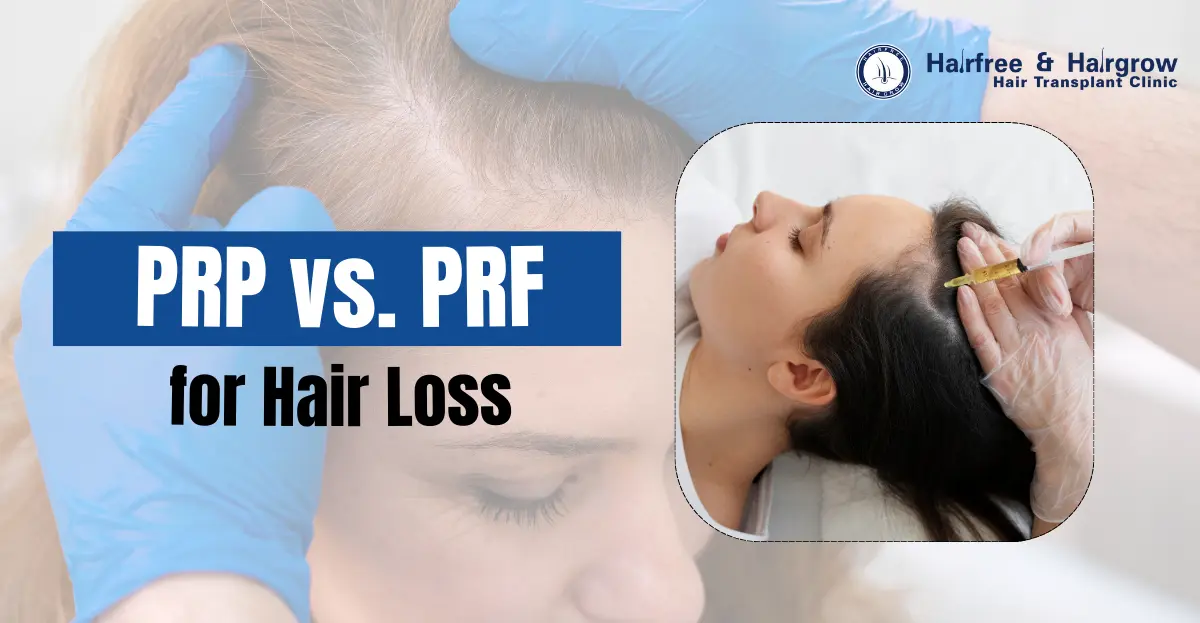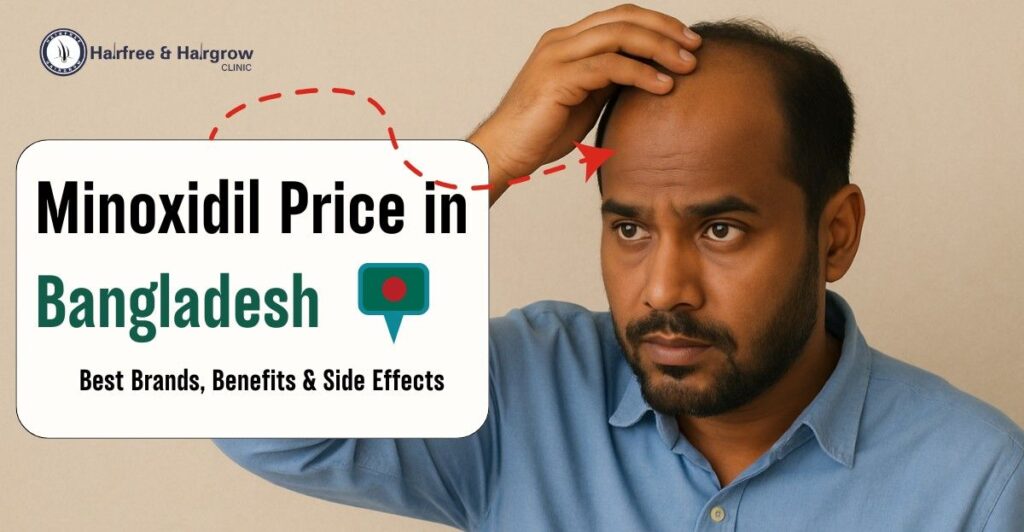Hair loss treatments are continuously evolving, with regenerative therapies like PRP (Platelet-Rich Plasma) and PRF (Platelet-Rich Fibrin) becoming increasingly popular. Both treatments involve drawing blood, processing it to extract growth factors, and injecting it into the scalp to stimulate hair regrowth. But what sets these two methods apart?
Let’s explore the differences, benefits, and effectiveness of PRP and PRF for hair loss.
Table of Contents
Understanding PRP and PRF
What Is Platelet-Rich Plasma (PRP)?
PRP, or Platelet-Rich Plasma, involves drawing a small amount of blood and processing it in a centrifuge. The process separates the plasma, which is rich in platelets. These platelets contain growth factors that promote cell repair and regeneration. When injected into the scalp, PRP aims to strengthen existing hair follicles, improve hair thickness, and encourage hair growth.
What Is Platelet-Rich Fibrin (PRF)?
PRF is a more recent advancement in regenerative therapy. Like PRP, it involves a blood draw and centrifugation, but the process is slower, preserving fibrin in the plasma. The fibrin forms a scaffold, allowing growth factors to be released gradually over time. This slower release may enhance the longevity of its effects on the scalp.

Key Differences Between PRP and PRF
Composition and Preparation
- PRP is prepared using a high-speed centrifuge that separates plasma from red blood cells, resulting in a clear, platelet-rich fluid.
- PRF, on the other hand, uses a slower spin, retaining some red cells and fibrin, creating a gel-like substance.
Growth Factor Release
PRP releases growth factors immediately after injection, but their effect lasts for minutes to hours. PRF, with its fibrin scaffold, releases growth factors more gradually, potentially extending its benefits.
Longevity and Effectiveness
PRF’s scaffold helps platelets stay active longer, potentially making it more effective over time. However, PRP may deliver higher platelet concentrations, which are vital for significant results.
Must Read –
| Daily Hair Loss: Why Am I Losing More Hair Than Usual? |
| Is Daily Hair Wash Good or Bad? |
How PRP and PRF Work for Hair Loss
Benefits of PRP for Hair Loss
- Stimulates hair follicles to promote hair regrowth.
- Improves hair density and thickness.
- Suitable for individuals in the early stages of hormonal hair loss or PCOS and hair thinning.
Benefits of PRF for Hair Loss
- Prolonged release of growth factors enhances the healing process.
- May work well for managing PCOS symptoms related to hair loss.
- Potentially more effective for individuals with moderate thinning due to its extended activity.
Comparing Results: PRP vs. PRF
When comparing PRP vs. PRF for hair loss, results vary based on individual factors like age, health, and the quality of the existing hair. Some clinics suggest combining both PRP and PRF for optimal results. However, it’s essential to consult an expert to determine the best treatment for your specific needs.
Cost Comparison of PRP and PRF
PRF is typically more expensive than PRP due to its advanced preparation process and prolonged effectiveness. However, the cost can vary depending on the clinic and the number of sessions required.
Parameter | PRP (Platelet-Rich Plasma) | PRF (Platelet-Rich Fibrin) |
|---|---|---|
Cost per session | ₹3,000 – ₹10,000 | ₹5,000 – ₹15,000 |
Number of sessions | 4–6 (varies by individual needs) | 2–4 (typically fewer than PRP) |
Processing Method | Uses anticoagulants; platelets activated artificially | No anticoagulants; natural clot formation |
Longevity of Results | Results last 4–6 months | Results last 6–12 months |
Growth Factors Density | Moderate | High |
Suitability | General hair loss or skin rejuvenation | Advanced hair loss or better healing needs |
Which Is Better for Hair Loss?
Suitability Based on Hair Loss Severity
- PRP is ideal for individuals in the early stages of hair loss, where hair follicles are still active.
- PRF may be more beneficial for moderate thinning, as its longer activity can better stimulate dormant follicles.
Individual Factors (Age, Health, Hair Type)
Your platelet count, overall health, and hair type play significant roles in determining the effectiveness of both treatments. Consulting a credible clinic is crucial for accurate diagnosis and effective treatment.
Expert Opinions on PRP vs. PRF
Many experts suggest that the effectiveness of PRP or PRF largely depends on the clinic’s protocol and the patient’s unique needs. While some clinics mix PRP with PRF for a balanced approach, others may recommend standalone treatments.
Conclusion
Choosing between PRP and PRF for hair loss depends on individual factors and the stage of hair thinning. While PRP offers immediate growth factor release, PRF provides prolonged benefits with its fibrin scaffold. To maximize results, it’s essential to consult a clinic specializing in hair restoration with proven results.
Looking for expert care for your hair loss concerns? Visit Hair Free & Hair Grow Clinic, a leading hair restoration clinic in India. With advanced treatments and a dedicated team, they offer customized solutions to help you regain your confidence.
FAQ
PRF may provide longer-lasting results due to its slow-release mechanism, but PRP delivers a higher concentration of platelets, making it effective in early-stage hair loss.
Typically, 3–6 sessions are needed, depending on the severity of hair loss and individual response to treatment.
Both treatments are minimally invasive, with mild side effects like redness, swelling, or discomfort at the injection site.
PRP is generally more affordable, but PRF may offer better value for individuals requiring prolonged results.

Written By
Medical Officer & Hair Transplant Surgeon
Dr. Nazmin Sultana Nipa is a distinguished hair transplant doctor in Bangladesh, known for her advanced skills in hair restoration. As a Medical Officer and Hair Transplant Surgeon, Dr. Nipa combines her extensive experience in the field with a focus on transparency and patient-centered care.
Disclaimer
We’ve made all possible efforts to ensure that the information provided here is accurate, up-to-date and complete, however, it should not be treated as a substitute for professional medical advice, diagnosis or treatment. See Detailed Disclaimers Here.



